The management of crop pests is becoming increasingly difficult. We have fewer products, resistance is an issue, public perception can be negative towards plant protection products, there are real registration challenges and climate change may exaggerate the problems. The ban on all outdoor use of neonicotinoid seed treatments is a striking example of how all these challenges combine to potentially leave farmers struggling to maintain control of pests to deliver potential yields.
Aphids and BYDV
Barley Yellow Dwarf Virus (BYDV) is a disease of cereal crops spread by aphids. There is no direct control for the virus so control measures focus on reducing infection risk by reducing aphid numbers. In 2015, there were four different groups of insecticides available for use on winter barley (pyrethroids, carbamates, organophosphates and neonicotinoids) and three for spring control (pyrethroids, carbamates and organophosphates). For spring and winter barley drilled in 2019 and onwards, only one group remains – pyrethroids.
Resistance
Control of cereal aphids has relied heavily on pyrethroid insecticide application. In England, during 2011 there were reports of aphid control failures where pyrethroids had been sprayed on barley crops. This led to the identification of the knockdown resistance (kdr) mutation in English grain aphid samples.
Aphids with the kdr mutation, which confers varying resistance to pyrethroids insecticides, were first detected in Ireland in 2013. In 2015 to 2018, field surveys found aphids carrying the kdr mutation in five major grain-growing counties. Unsprayed fields and grass margins were found to harbour kdr-SR individuals. This is not surprising given aphid mobility but it may have implications for green bridge carryover and the local persistence of resistant aphids.
To date, only partially resistant grain aphids have been detected in Ireland, so it is important to use full recommended rates where insecticides are applied to achieve control. Where a suspected control failure occurs, it is important not to follow with the same chemistry so as to avoid exacerbating the problem.
Grain aphids collected in Irish winter barley fields show a substantial variation in pyrethroid toxicity. Preliminary work indicates that a second resistance mechanism may also exist in Irish grain aphids which may partially explain field-to-field variation in control.
Neonic ban
Neonicotinoids (Neonics) are active substances used in plant protection products to control insect pests. Neonicotinoids are systemic, which means they are taken up by the plant and transported throughout its tissues. Five neonicotinoid insecticides were approved in the EU for plant protection – clothianidin (Deter), imidacloprid (Gaucho), thiamethoxam (Cruiser), acetamiprid (Biscaya) and thiacloprid (Biscaya).
In 2013, the European Commission severely restricted the use of insecticides and seed treatments containing three of these neonicotinoids – clothianidin, imidacloprid and thiamethoxam. This followed a risk assessment by the European Food Safety Authority (EFSA) in 2012. The measure prohibited the use of these three neonicotinoids in bee-attractive crops (including maize, oilseed rape and sunflower), with exceptions for use in greenhouses, the treatment of some crops after flowering and for winter cereals.
The Commission went on to ban all outdoor uses of imidacloprid, clothianidin and thiamethoxam on 29 May 2018. The EFSA review stated that bees are exposed to dangerous levels of pesticide in pollen and nectar in fields treated with these neonicotinoids, as well as on nearby land. The review also indicated that drifts of dust that could occur during planting of neonicotinoid-treated seeds could be dangerous to bees. Other studies have shown harm to pollinators in laboratory settings, while large field trials have demonstrated mixed results.
Control post neonics
2018 was the last season the neonic seed treatment Redigo Deter could be used to control cereal aphid and BYDV in winter cereals. Seed treatments were preventative, gave protection from drilling onwards, lasted six to eight weeks and eliminated or reduced the need for foliar applications. This loss raises a number of challenges for growers in controlling pests and sustaining yields.

Only certain species of aphid can transmit BYDV and within that species some clones can do this more effectively than others.
We are now very limited in our control options to manage aphids. It is likely that we will see increased spraying to compensate for the removal of preventative seed treatments and this presents its own issues. As we now have only one chemistry (pyrethroids) for BYDV control in winter and spring barley, this will place a greater reliance on this group with consequentially higher resistance risk. The more a compound is used, the greater the selection pressure for resistance.
Looking forward, the control of BYDV and aphids will require careful integration of monitoring, cultural and chemical control methods. It is important to identify risk periods and risk areas, but it seems unlikely for the immediate future that we will be able to maintain BYDV levels as low as in the past. This may be especially the case in high-risk areas and years with very mild winters.
Future control of cereal aphids is uncertain and challenging. It will require innovation in conjunction with an integrated pest management approach. Alternative control options such as tolerant or resistant varieties, as well as alternative plant protection products, would greatly help farmers. It is increasingly important to incorporate sustainable farming methods that utilise cultural control options, encourage natural enemies of crop pests and support biodiversity and healthy soils.
Integrated pest management
Integrated pest management or IPM aims to provide sustainable control by utilising multiple control approaches (cultural, physical, biological and chemical) rather than just relying on chemicals.
Examples of how this might work are shown in Table 1. However, chemical control will still have an important role to play in high-risk areas and periods to protect yields and profits.
Integrated pest management tools: Some of these are not currently available for control of BYDV, such as variety selection, alternative chemistry (in winter or spring barley) and thresholds based on aphid density.
One important cultural control option is drilling date (planting later in winter and earlier in spring helps to reduce risk of BYDV). September and early October are generally higher risk for BYDV infection. However, as later drilling may leave you more susceptible to broken weather, this is not a simple solution.
Additionally, planting date may not be a reliable IPM tool in mild winters where frost does not reduce aphid and BYDV pressure. Equally planting early in spring may not be as effective for reducing BYDV pressure when there has been a mild winter.
Minimising the green bridge provided for aphids by volunteer cereals or weeds through cultivation or desiccation is also important. Together these offer a first line of defence in your IPM approach.
Investment in innovation and the creation of more BYDV tolerant or resistant varieties, plus other new technologies, may add new control strategies for the future.
Biologicals
Biological control offers another potential avenue for crop protection. Two approaches to exploit biological control for pests such as cereal aphids are: augmentation, or the release of natural enemies, and conservation, or practices that support/encourage natural enemies of the pest.
It is possible to design multifunctional margins and these could represent added value for the area of land used. However, it is important to select plants carefully as the flowering season may not be early enough or long enough to support enemies at critical periods.
A 2015 study in the UK removed 3% or 8% of land at the field edge from production to create wildlife habitats in 50-60ha lots. In the control fields, crop yields were reduced by as much as 38% at the field edge. Habitat creation in these lower-yielding areas led to increased yield in the cropped areas of the fields. As a consequence, yields at the field scale were maintained despite the loss of cropland for habitat creation.
In general terms it is considered that:
1 The greater the diversity of enemies conserved (predators, parasitoids and pathogens), the more likely long-term control will be achieved,
2 It is more likely that a diversity of natural enemies will be supported where there is a diversity of habitats.
However, utilising natural enemies for control of cereal aphids which vector BYDV is challenging as it may take very few aphids to transmit BYDV in a crop.
Controlling leather-jackets without chemicals

The absence of insecticides for the control of leather-jackets makes this research on biological agents very important.
Another pest for which we have very limited control options is leather-jacket. Leather-jackets are the larvae of the crane fly and are a major pest of grassland and a sporadic pest of crops land, especially spring barley. Leather-jackets are generally not a major problem in cereals, although issues may arise following leys, heavy applications of manure or where the field has a history of leather-jacket activity.
Leather-jacket larvae feed on the roots and stems of plants at or below ground level and reduce yield by reducing plant and tiller numbers. Reseeded leys can be completely destroyed.
The insecticide chlorpyrifos had been used effectively for many years to control pests of new grassland but this was withdrawn in 2016.
The loss of key chemical insecticides combined with the implementation of the Sustainable Use Directive, which requires an adoption of IPM, means there is increased demand for effective biopesticides for use in IPM programmes.
To effectively manage this pest of grassland and tillage, a number of aspects need to be addressed. These include the distribution of the predominant leather-jacket species and the identification and optimisation of suitable entomopathogens for their biocontrol.
Entomopathogens are pathogens that kill insects. They can be bacterial, viral or fungal and they play a vital role in the regulation of insect pests in nature.
New project
A new Teagasc project aims to address these different avenues and to develop a pest management plan for leather-jackets in the absence of approved insecticides. This project will involve studying the soil microbiome, and in particular all the bacteria and fungi in the soil associated with leather-jacket presence.
This project aims to:
Assess the makeup and distribution of leather-jacket populations in grassland/tillage land in Ireland. This will provide a greater insight into this major pest.Utilise the soil microbiome to enhance the understanding and identification of beneficial entomopathogens in the soil to help with leather-jacket control.Utilise the microbiome to identify novel biocontrol targets in the soil and insect gut.Develop strategies for the integration of biocontrol products into IPM programmes for leather-jacket management.If farmers/growers would be interested in being involved in this project and in having their fields surveyed for leather-jackets, or if they have further questions on the project, they can contact the Walsh
Fellow Aisling Moffat on
Aisling.Moffat@teagasc.ie.
The management of crop pests is becoming increasingly difficult. We have fewer products, resistance is an issue, public perception can be negative towards plant protection products, there are real registration challenges and climate change may exaggerate the problems. The ban on all outdoor use of neonicotinoid seed treatments is a striking example of how all these challenges combine to potentially leave farmers struggling to maintain control of pests to deliver potential yields.
Aphids and BYDV
Barley Yellow Dwarf Virus (BYDV) is a disease of cereal crops spread by aphids. There is no direct control for the virus so control measures focus on reducing infection risk by reducing aphid numbers. In 2015, there were four different groups of insecticides available for use on winter barley (pyrethroids, carbamates, organophosphates and neonicotinoids) and three for spring control (pyrethroids, carbamates and organophosphates). For spring and winter barley drilled in 2019 and onwards, only one group remains – pyrethroids.
Resistance
Control of cereal aphids has relied heavily on pyrethroid insecticide application. In England, during 2011 there were reports of aphid control failures where pyrethroids had been sprayed on barley crops. This led to the identification of the knockdown resistance (kdr) mutation in English grain aphid samples.
Aphids with the kdr mutation, which confers varying resistance to pyrethroids insecticides, were first detected in Ireland in 2013. In 2015 to 2018, field surveys found aphids carrying the kdr mutation in five major grain-growing counties. Unsprayed fields and grass margins were found to harbour kdr-SR individuals. This is not surprising given aphid mobility but it may have implications for green bridge carryover and the local persistence of resistant aphids.
To date, only partially resistant grain aphids have been detected in Ireland, so it is important to use full recommended rates where insecticides are applied to achieve control. Where a suspected control failure occurs, it is important not to follow with the same chemistry so as to avoid exacerbating the problem.
Grain aphids collected in Irish winter barley fields show a substantial variation in pyrethroid toxicity. Preliminary work indicates that a second resistance mechanism may also exist in Irish grain aphids which may partially explain field-to-field variation in control.
Neonic ban
Neonicotinoids (Neonics) are active substances used in plant protection products to control insect pests. Neonicotinoids are systemic, which means they are taken up by the plant and transported throughout its tissues. Five neonicotinoid insecticides were approved in the EU for plant protection – clothianidin (Deter), imidacloprid (Gaucho), thiamethoxam (Cruiser), acetamiprid (Biscaya) and thiacloprid (Biscaya).
In 2013, the European Commission severely restricted the use of insecticides and seed treatments containing three of these neonicotinoids – clothianidin, imidacloprid and thiamethoxam. This followed a risk assessment by the European Food Safety Authority (EFSA) in 2012. The measure prohibited the use of these three neonicotinoids in bee-attractive crops (including maize, oilseed rape and sunflower), with exceptions for use in greenhouses, the treatment of some crops after flowering and for winter cereals.
The Commission went on to ban all outdoor uses of imidacloprid, clothianidin and thiamethoxam on 29 May 2018. The EFSA review stated that bees are exposed to dangerous levels of pesticide in pollen and nectar in fields treated with these neonicotinoids, as well as on nearby land. The review also indicated that drifts of dust that could occur during planting of neonicotinoid-treated seeds could be dangerous to bees. Other studies have shown harm to pollinators in laboratory settings, while large field trials have demonstrated mixed results.
Control post neonics
2018 was the last season the neonic seed treatment Redigo Deter could be used to control cereal aphid and BYDV in winter cereals. Seed treatments were preventative, gave protection from drilling onwards, lasted six to eight weeks and eliminated or reduced the need for foliar applications. This loss raises a number of challenges for growers in controlling pests and sustaining yields.

Only certain species of aphid can transmit BYDV and within that species some clones can do this more effectively than others.
We are now very limited in our control options to manage aphids. It is likely that we will see increased spraying to compensate for the removal of preventative seed treatments and this presents its own issues. As we now have only one chemistry (pyrethroids) for BYDV control in winter and spring barley, this will place a greater reliance on this group with consequentially higher resistance risk. The more a compound is used, the greater the selection pressure for resistance.
Looking forward, the control of BYDV and aphids will require careful integration of monitoring, cultural and chemical control methods. It is important to identify risk periods and risk areas, but it seems unlikely for the immediate future that we will be able to maintain BYDV levels as low as in the past. This may be especially the case in high-risk areas and years with very mild winters.
Future control of cereal aphids is uncertain and challenging. It will require innovation in conjunction with an integrated pest management approach. Alternative control options such as tolerant or resistant varieties, as well as alternative plant protection products, would greatly help farmers. It is increasingly important to incorporate sustainable farming methods that utilise cultural control options, encourage natural enemies of crop pests and support biodiversity and healthy soils.
Integrated pest management
Integrated pest management or IPM aims to provide sustainable control by utilising multiple control approaches (cultural, physical, biological and chemical) rather than just relying on chemicals.
Examples of how this might work are shown in Table 1. However, chemical control will still have an important role to play in high-risk areas and periods to protect yields and profits.
Integrated pest management tools: Some of these are not currently available for control of BYDV, such as variety selection, alternative chemistry (in winter or spring barley) and thresholds based on aphid density.
One important cultural control option is drilling date (planting later in winter and earlier in spring helps to reduce risk of BYDV). September and early October are generally higher risk for BYDV infection. However, as later drilling may leave you more susceptible to broken weather, this is not a simple solution.
Additionally, planting date may not be a reliable IPM tool in mild winters where frost does not reduce aphid and BYDV pressure. Equally planting early in spring may not be as effective for reducing BYDV pressure when there has been a mild winter.
Minimising the green bridge provided for aphids by volunteer cereals or weeds through cultivation or desiccation is also important. Together these offer a first line of defence in your IPM approach.
Investment in innovation and the creation of more BYDV tolerant or resistant varieties, plus other new technologies, may add new control strategies for the future.
Biologicals
Biological control offers another potential avenue for crop protection. Two approaches to exploit biological control for pests such as cereal aphids are: augmentation, or the release of natural enemies, and conservation, or practices that support/encourage natural enemies of the pest.
It is possible to design multifunctional margins and these could represent added value for the area of land used. However, it is important to select plants carefully as the flowering season may not be early enough or long enough to support enemies at critical periods.
A 2015 study in the UK removed 3% or 8% of land at the field edge from production to create wildlife habitats in 50-60ha lots. In the control fields, crop yields were reduced by as much as 38% at the field edge. Habitat creation in these lower-yielding areas led to increased yield in the cropped areas of the fields. As a consequence, yields at the field scale were maintained despite the loss of cropland for habitat creation.
In general terms it is considered that:
1 The greater the diversity of enemies conserved (predators, parasitoids and pathogens), the more likely long-term control will be achieved,
2 It is more likely that a diversity of natural enemies will be supported where there is a diversity of habitats.
However, utilising natural enemies for control of cereal aphids which vector BYDV is challenging as it may take very few aphids to transmit BYDV in a crop.
Controlling leather-jackets without chemicals

The absence of insecticides for the control of leather-jackets makes this research on biological agents very important.
Another pest for which we have very limited control options is leather-jacket. Leather-jackets are the larvae of the crane fly and are a major pest of grassland and a sporadic pest of crops land, especially spring barley. Leather-jackets are generally not a major problem in cereals, although issues may arise following leys, heavy applications of manure or where the field has a history of leather-jacket activity.
Leather-jacket larvae feed on the roots and stems of plants at or below ground level and reduce yield by reducing plant and tiller numbers. Reseeded leys can be completely destroyed.
The insecticide chlorpyrifos had been used effectively for many years to control pests of new grassland but this was withdrawn in 2016.
The loss of key chemical insecticides combined with the implementation of the Sustainable Use Directive, which requires an adoption of IPM, means there is increased demand for effective biopesticides for use in IPM programmes.
To effectively manage this pest of grassland and tillage, a number of aspects need to be addressed. These include the distribution of the predominant leather-jacket species and the identification and optimisation of suitable entomopathogens for their biocontrol.
Entomopathogens are pathogens that kill insects. They can be bacterial, viral or fungal and they play a vital role in the regulation of insect pests in nature.
New project
A new Teagasc project aims to address these different avenues and to develop a pest management plan for leather-jackets in the absence of approved insecticides. This project will involve studying the soil microbiome, and in particular all the bacteria and fungi in the soil associated with leather-jacket presence.
This project aims to:
Assess the makeup and distribution of leather-jacket populations in grassland/tillage land in Ireland. This will provide a greater insight into this major pest.Utilise the soil microbiome to enhance the understanding and identification of beneficial entomopathogens in the soil to help with leather-jacket control.Utilise the microbiome to identify novel biocontrol targets in the soil and insect gut.Develop strategies for the integration of biocontrol products into IPM programmes for leather-jacket management.If farmers/growers would be interested in being involved in this project and in having their fields surveyed for leather-jackets, or if they have further questions on the project, they can contact the Walsh
Fellow Aisling Moffat on
Aisling.Moffat@teagasc.ie.






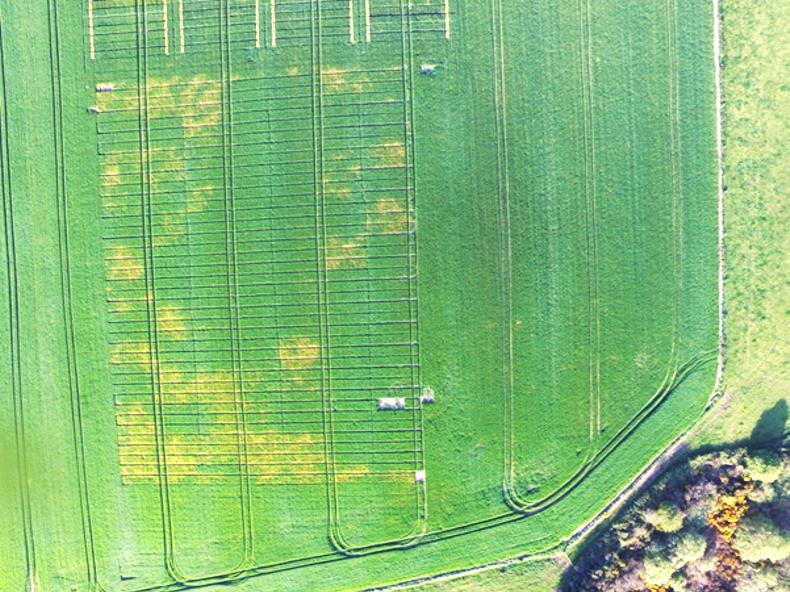
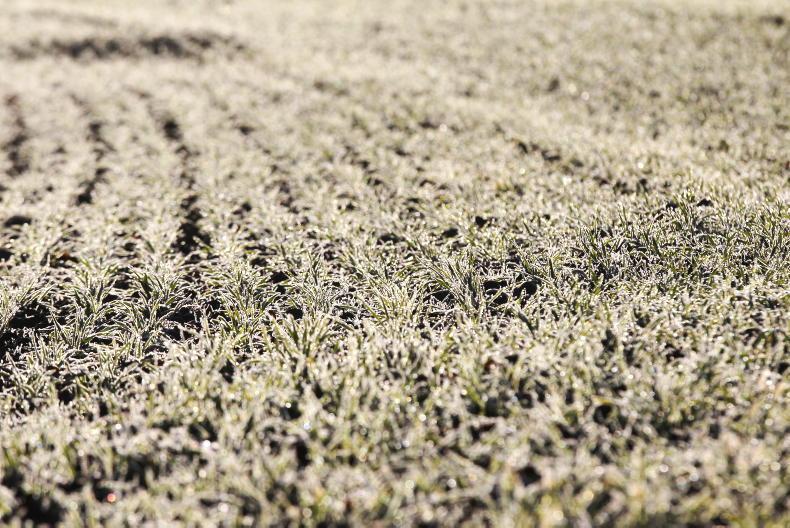

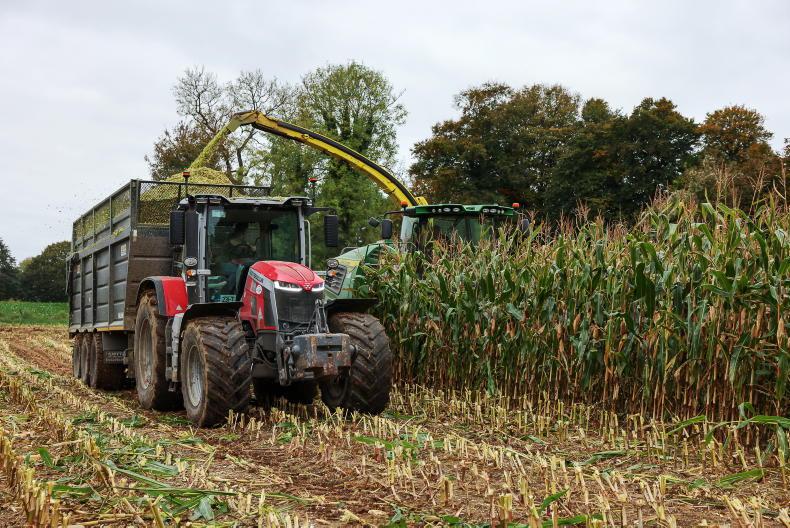
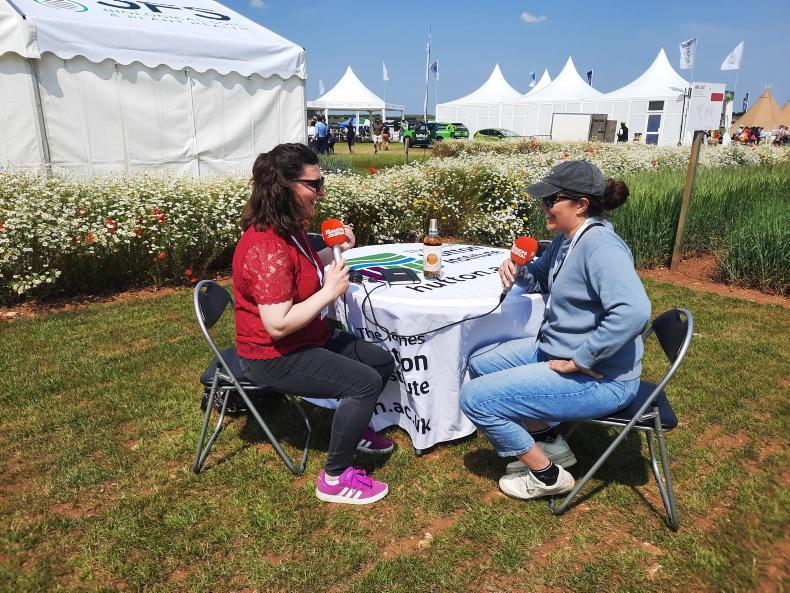
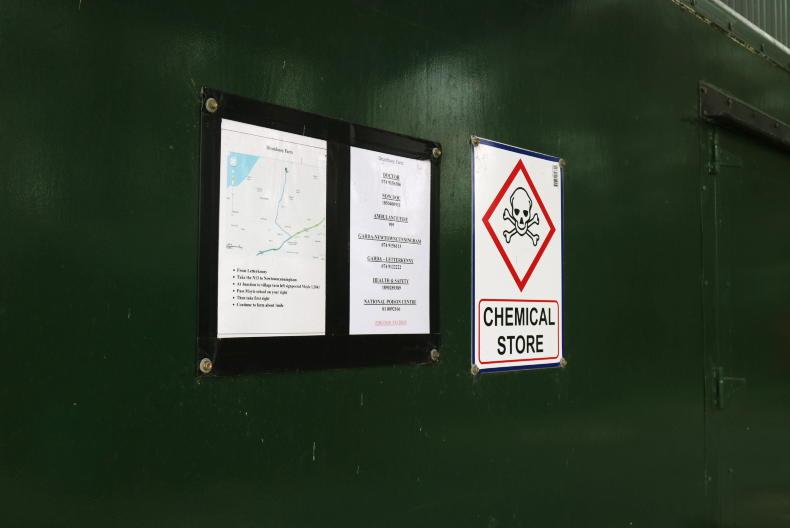
SHARING OPTIONS